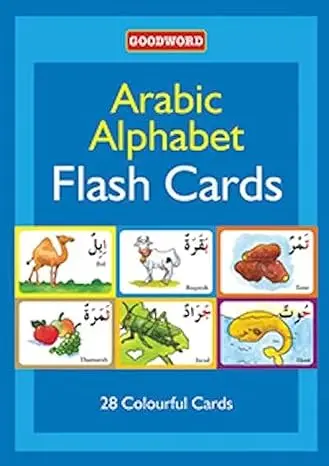Learning Arabic Alphabets for Kids can be an exciting adventure, especially for young minds eager to explore the world around them.
Teaching kids the Arabic alphabet doesn’t just open the doors to communication; it invites them into a world of magic and discovery.
In this article, we’ll explore creative and engaging ways to introduce kids to the captivating world of Arabic alphabets.
Table Of Content
- Interactive Flashcards
- Story time with Arabic Characters
- Arabic Alphabet Song
- Multi-sensory Activities
- Arabic Alphabet Puzzle
- Cultural Exploration
- Conclusion
Arabic script is not just a collection of letters; it’s an art form that has evolved over centuries.
Each letter has a unique shape and sound, and this distinctiveness can captivate a child’s imagination.
Begin by showing them how these letters are different from the ones they know, and let them marvel at the curvy lines and dots that make up the Arabic script.
1.Interactive Flashcards
Create colorful flashcards featuring Arabic letters on one side and simple illustrations on the other.
Associate each letter with an object that starts with the same sound in English.
For instance, “Ba” could be represented by a picture of a ball.
This playful association makes learning more enjoyable and helps kids connect the new information with something familiar.
2.Story time with Arabic Characters
Craft simple stories using Arabic letters as characters.
For example, “أ” (Alef) could be the adventurous protagonist, and “ب” (Ba) could be a mischievous sidekick.
Narrate stories where these characters embark on exciting journeys, providing context for each letter and its sound.
This technique not only aids memory retention but also kindles a child’s storytelling creativity.
3.Arabic Alphabet Song
Music has a magical way of ingraining information into young minds.
Create a catchy song that includes the Arabic letters and their corresponding sounds.
You can find numerous resources online with ready-made songs or craft your own.
Sing along with your child, turning learning into a delightful musical experience.
4.Multi-sensory Activities
Kids learn best when they can engage their senses.
Incorporate activities that involve touch, sight, and even taste! Using play-dough, mold Arabic letters and encourage your child to identify and pronounce them.
You can also use edible materials like cookie dough to shape the letters and then enjoy your delicious creations together.
5.Arabic Alphabet Puzzle
Transform learning into a puzzle-solving adventure.
Craft or buy an Arabic alphabet puzzle where each piece corresponds to a letter.
As your child completes the puzzle, discuss the letters and their sounds.
This hands-on approach enhances spatial reasoning while reinforcing letter recognition.
6.Cultural Exploration
Learning a language also means delving into the culture it represents.
Introduce your child to Arabic calligraphy and explain its significance in Islamic art.
Show them pictures of Arabic-speaking countries and their beautiful landscapes.
This broader perspective fosters an appreciation for diversity and encourages curiosity about the world.
Conclusion
Learning the Arabic alphabet can be a magical journey for kids, offering them the opportunity to explore a new language, culture, and way of thinking.
By incorporating interactive activities, creative storytelling, and multi-sensory experiences, you can make the learning process engaging and enjoyable.
As your child’s excitement grows, so will their confidence in navigating the enchanting world of Arabic letters. So, set sail on this adventure together, and watch as your child’s language skills and cultural awareness flourish.
